Department of Earth and Environmental Sciences
Biochar & Manure
Fresno State has countless of environmental-based studies, one of them being in regards to the issues of Biochar & Manure. For this research, "field-plotting" (the practice of physically marking out specific areas within a field to conduct research experiments) will be utilized in this study to show how biochar application in manure could assist in decreasing methane and nitrous oxide emissions in the Central Valley.
The Process of The Experiment
(All thanks to CSM BOND Students Genesis, Laila, and Noelia)
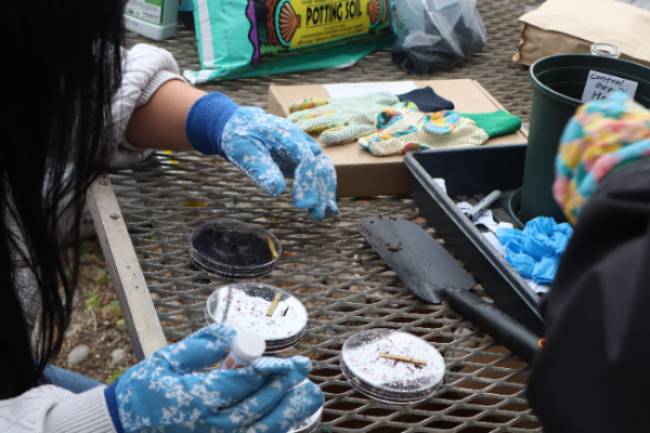
Manure alone isn't always environmentally beneficial, especially if it's poorly managed. To find healthier alternatives that can potentially improve soil property benefits while reducing greenhouse gas emissions and waste in our environment, this group would have to currently test out different percentages of mixtures with biochar and manure (10%, 20%, 30% biochar mixed in with manure samples) to see what gives off the best nutrient levels.
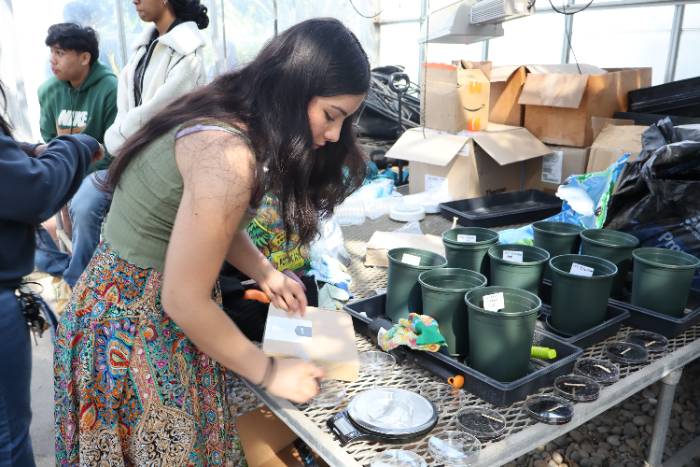
Let's walk through the experiment process. Here, we can see that they are setting up Petri dishes for each combined sample of biochar and manure. Initially, they evaluate 10% of biochar and 90% of manure for their first sample. Then, they evaluate 20% of biochar and 80% of manure for their second sample. And for their third sample, they evaluate 30% of biochar and 70% of manure. These combinations are necessary to know what provides the most beneficial results and data from this experiment.
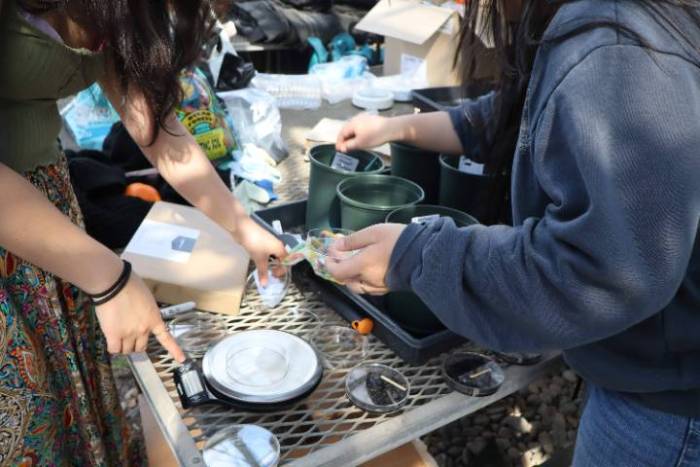
In addition, they are utilizing a control group of manure for their fourth sample, which would be a mix of manure and compost, as pure cow manure can't be used for safety reasons. Their fifth sample consists of the control group soil that'll also be tested with, while their sixth sample consists of soil and chemical fertilizer combined.
Methods
In order to achieve optimal and desirable results for this group's research, these student researchers have used the following equipment to gather their data: pH Module, Phosphorous, Nitrogen, and Potassium levels.
Location:
The research and development of this project took place in the Fresno State Greenhouse, located outside of the Science II Building. One of Fresno State's McLane Labs were also used for experimenting.
Equipment Used for pH Module:
This group recorded results for the pH Module by:
- (15 mL) Tricon pH Indicator
- (120 mL) Tricon Flocculating Reagent
- (2) Test Tubes w/ Caps
- (1) 0.5 g Spoon
- (1) pH soil Octa-slide 2 bar, 4.0-9.0
- (1) Octa slide 2 viewer
A quick glance at what they've been working on:
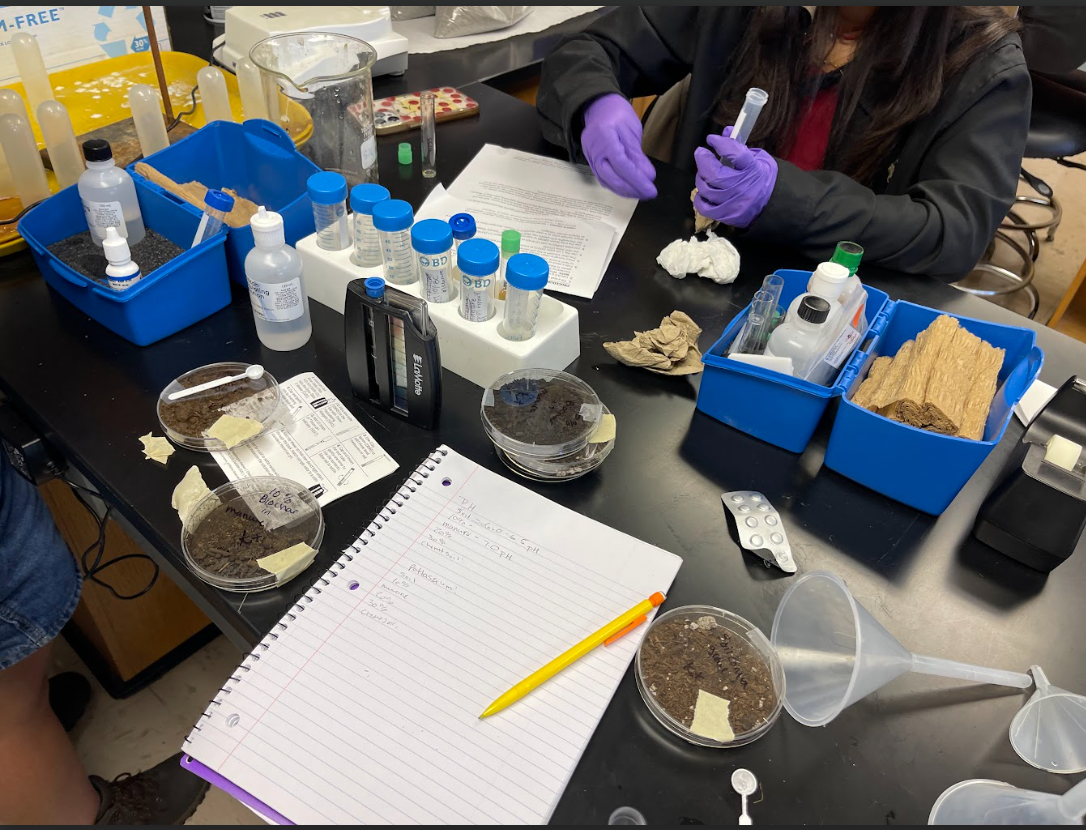
CSM Bond Students Using Laboratory Equipment for Evaluating These Samples
Equipment Used For Phosphorous:
This group recorded results for Phosphorous levels by:
- (120 mL) Universal Extracting Solution
- (120 mL) Universal Extracting Solution
- (30 mL) Phosphorous Reagent #2
- (50) Phosphorous Test Tablets
- (1) Plain Glass Pipet w/ Cap
- (1) 50 Pack Filter Paper
- (1) Plastic Funnel
- (1) Test Tube w/ Cap, 2-10 mL
- (2) Test Tubes, Phosphorous B w/ Caps
- (1) Test Tube, Plastic, Filtrate
- (1) 0.5 g Spoon
- (1) Color Chart, Phosphorous
Equipment Used For Nitrogen:
This group recorded results for Nitrogen levels by:
- (120 mL) Universal Extracting Solution
- (120 mL) Universal Extracting Solution
- (30 g) Nitrate Reagent #1
- (2) Nitrate Reagent #2 Powder
- (1) 0.5 g Plastic Spoon
- (1) 1.0 mL Plastic Pipet
- (1) Plastic Stirring Rod
- (1) Spot, Plate, Double, Plastic
- (1) Plastic Funnel
- (3) Plastic Test Tubes w/ Cap, 2-10 mL
- (1) Plain Plastic Pipet w/ Cap
- (1) 50 Pack Filter Paper
- (1) Plastic Test Tube, Filtrate
- (1) Nitrate- Nitrogen Color CHart
Equipment Used For Potassium:
This group recorded results for Potassium levels by:
- (120 mL) Universal Extracting Solution
- (120 mL) Universal Extracting Solution
- (50 mL) Potassium B Tablets
- (120 mL) Potassium Reagent C
- (1) Test Tube, Potash "B"
- (4) Plastic Funnel
- (1) 50 Pack Filter Paper
- (1) Plastic Pipet
- (1) 0.5 g Spoon
- (1) Potash Reading Plate
- (1) Plastic Test Tube, Filtrate
- (1) Dispenser Cap
Essential Information
Did you know that manure lagoons are one of the top leading causes for air and water pollution in California?
What sparked this student-led research was how the crisis of manure lagoons are rising and negatively affecting our atmosphere. These manure lagoons are man-made lakes where AFOs (animal feeding operations) dump all of their waste into, rather than utilizing this waste as fertilizer. Some use manure, while some don't since manure could leech into the ground and cause E. Coli outbreaks. In order to prevent "leeching" and manure lagoons, this group planned to set out an experiment for the community to use manure and biochar in hopes of a healthier soil and planet. This way, manure could be used as a fertilizer while biochar is being implemented in it!
Why biochar?
Well, biochar is actually good for soil amendments, especially when it's paired up with manure. Biochar has this charcoal-look to it and is actually made up of biomass waste, in which it enhances water-retention and carbon dioxide storage in soil! This means that soil could hold in more water and carbon dioxide, which ultimately decreases the amount of greenhouse gases released into the atmosphere. It's an upgrade for soil that many excellent scientific researchers have backed up.
All of the following questions are concerning manure as fertilizer without biochar implementation:
How Is Air Quality Affected?
Manure from animal feeding operations (AFOs) can affect air quality through the release of hazards (e.g methane, nitrous oxide, ammonia, and carbon dioxide), which then leads to respiratory issues like asthma.
What Effects Are Put On Agriculture?
Excessive use of manure can lead to soil nutrient imbalances, which eventually affects crop health and productivity.
What Are Some Health Risks?
Manure lagoons can negatively impact the community by causing water pollution through nutrient runoff, leading to E. Coli outbreaks by contaminated water or food that is being consumed.
What About Odors and Pests?
Unmanaged animal manure can result to strong and unpleasant odors, causing flies and rodents to be attracted to crops. This poses as a health risk and damage to its surrounding crops.
Initial Projected Results
These are the initial projected results, from the months of March to April 2025, found in this group's study so far!

Nitrogen and Phosphorus Levels
Results of Nitrogen and Phosphorous levels found within each sample type.
Get Overview of Nitrogen and Phosphorous levels Initial Projected Results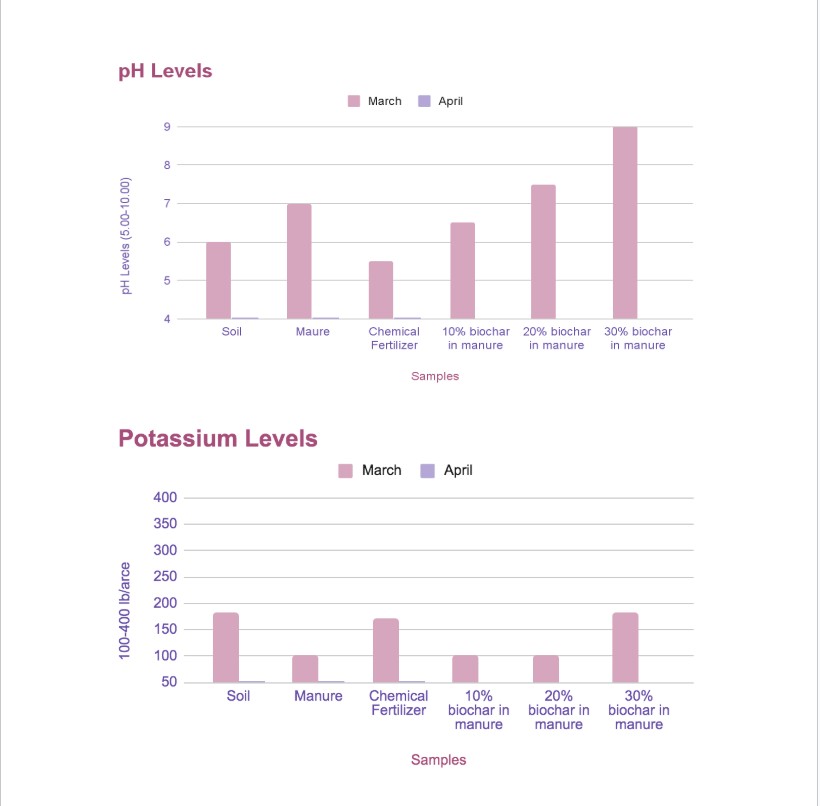
pH and Potassium Levels
Results of pH and Potassium levels found within each sample type.
Get Overview of pH and Potassium levels Initial Projected ResultsFinal Projected Results
These are the final project results, gathered from the months of March to May 2025, found in this group's study so far!
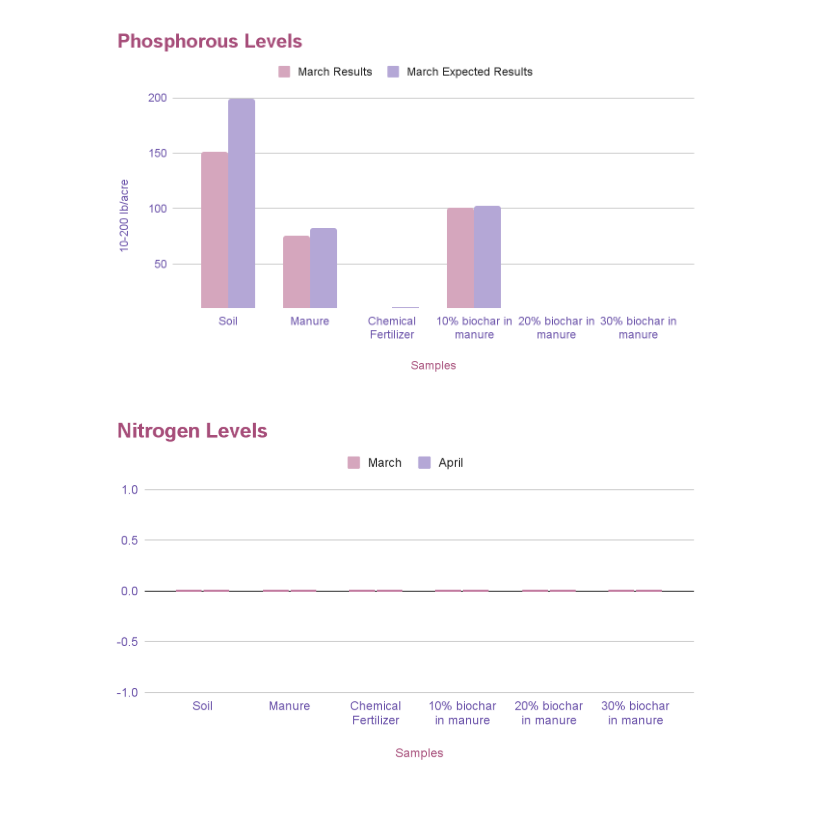
Nitrogen and Phosphorus Levels
Results of Nitrogen and Phosphorous levels found within each sample type.
Get Overview of Nitrogen and Phosphorous Final Projected Results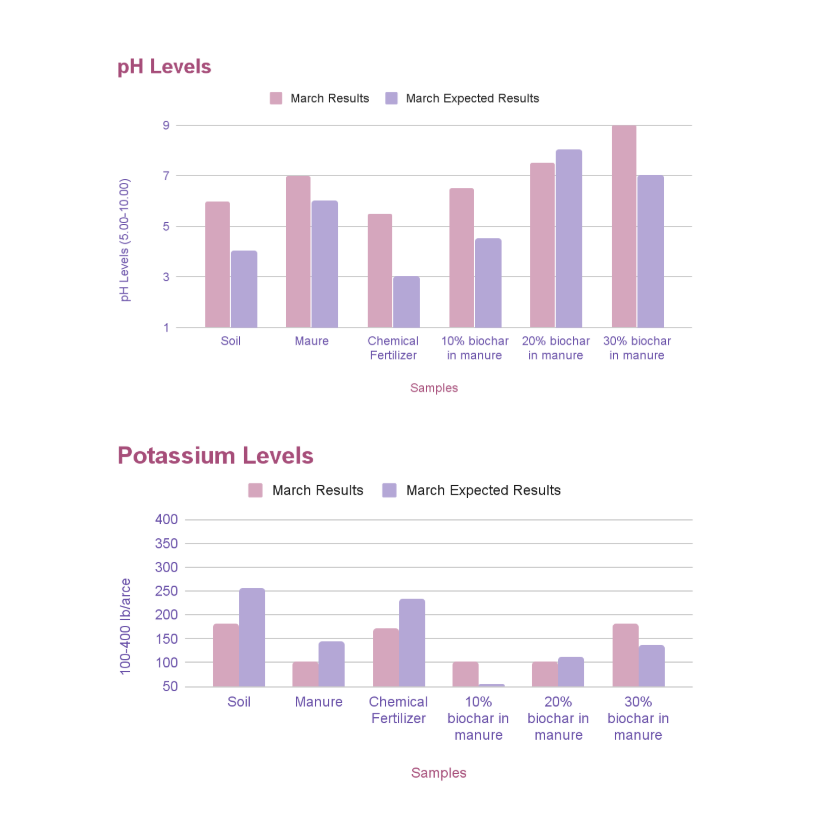
pH and Potassium Levels
Results of pH and Potassium levels found within each sample type.
Get Overview of pH and Potassium levels Final Projected Results
Limitations & Suggestions
Limitations:
Since this research was rushed due to the semester wrapping up, this group was unable to collect the rest of the data for the Nitrogen levels. There was a limited time frame in this experiment, so it's a possibility that some results may be inaccurate for certain samples.
Suggestions:
Despite its limitations, this research project may continue to prosper and reap future discoveries if it were to be in a longer research time schedule. It may also continue to prosper with the right connections who have experience in agriculture, who may be farmers or soil researchers.
Credits
Notable Bond Researchers: Website Coordinator:
Alexis Alexxa Aurio
Eema
Jeffrey
Triston
Fellow Student Researchers:
Noelia Ramirez
Laila Yang
Genesis Vasquez